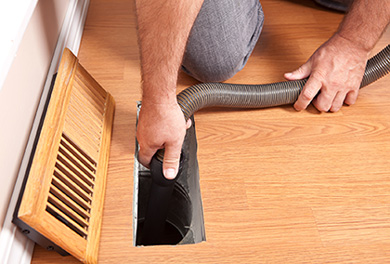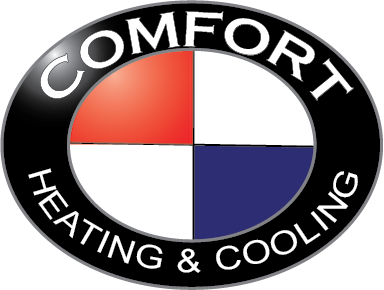5 Ways to Fix Uneven Home Heating and Cooling
Many homeowners complain of a room — or even an entire floor — that is excessively hot or cold. Since warm air rises, it’s not uncommon to experience an upper level that is too warm even when the air conditioning is turned on. A slight difference in temperature isn’t necessarily something to be concerned about. However, if you’re struggling to maintain comfort throughout your entire house, there are a few fixes that can help your home HVAC system work more evenly. Some of them you can even easily perform yourself!
Fix #1: Check your vents and filters
 First, look at all the vents in your home and make sure there are no blockages. If furniture is blocking the vents, there is an easy fix to your HVAC woes — simply move the furniture and the air will more easily circulate throughout your house. While you’re at it, ensure you’re changing air filters on a regular basis. Dirty air filters can worsen air circulation. Finally, vacuum the registers and vents. Use the hose and brush attachment to clean the exterior of the intake vents, which can collect dust, dirt, and other debris. This is another easy way to help air circulate.
First, look at all the vents in your home and make sure there are no blockages. If furniture is blocking the vents, there is an easy fix to your HVAC woes — simply move the furniture and the air will more easily circulate throughout your house. While you’re at it, ensure you’re changing air filters on a regular basis. Dirty air filters can worsen air circulation. Finally, vacuum the registers and vents. Use the hose and brush attachment to clean the exterior of the intake vents, which can collect dust, dirt, and other debris. This is another easy way to help air circulate.
Fix #2: Use the fan
Modern thermostats have a fan option that can be switched between “auto,” “on,” and “off.” While “auto” might seem like the best option, it’s actually more advantageous to have the fan “on.” When a system’s fan is on, the air is circulated even after a cooling cycle has turned off. This means that air is circulating constantly to even out temperatures. In contrast, when in the “auto” position, the fan only runs when the unit is also running.
Fix #3: Inspect your attic space
How’s your attic looking? Insulation keeps cool air inside and hot air outside. When your attic space isn’t properly insulated, your air conditioner has to work extra hard. If your upstairs is noticeably warmer than the downstairs, then adding insulation with the correct R-Value will likely improve your home’s comfort.
Additionally, look for attic vents on the roof or in the eaves. Attic ventilation is vital in preventing heat from building up. Proper ventilation lets heat and moisture escape. If you don’t see any vents, then you need to add ventilation. If you do see vents, how do you know if the ventilation is adequate? A hot ceiling is one sign that heat is building up in your attic. Moisture and condensation on the rafters or sheathing is another indication that the ventilation isn’t meeting your home’s needs.
While experienced DIYers may feel comfortable adding insulation to an attic, most homeowners will want to call in the professionals to deal with insulation and ventilation.
Fix #4: Check for leaky ducts
The last solution is the most intensive but it’s also the best way to ensure comfort no matter your home’s layout or challenging elements. A zoning system lets you control the temperature in specific areas or floors. Zoning systems are easy to incorporate when a ductless heat pump is being installed. These systems can provide customized temperatures in different rooms or can be added on to a traditional system to overcome trouble spots. Beyond the temperature control benefits, ductless heat pumps are a great option when there isn’t existing ductwork, when central heating is inefficient or costly, or when additions or outbuildings aren’t comfortable.
The friendly experts at Comfort Heating and Cooling are happy to assess your home’s challenges and figure out how to make your home more comfortable. Contact us today for a free assessment by calling 503-679-9276 or filling out the following form.
Tags: ductless heat pump
